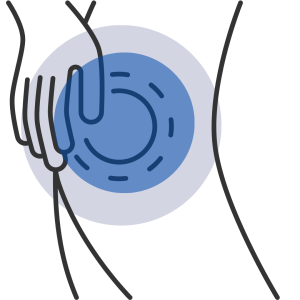
HIP JOINT SYNOVITIS
Hip joint synovitis refers to inflammation of the synovial membrane in the hip joint. The synovial membrane is a layer of membrane lining the inner surface of the joint and is responsible for the production of fluid within the joint. Synovitis often occurs as a symptom of another underlying disease or can develop as a result of direct damage to the joint surface.
Causes:
Rheumatoid Arthritis:
Rheumatoid arthritis can cause joint inflammation when the immune system mistakenly targets its own joint tissues.
Osteoarthritis:
People with arthritis may develop synovitis as a result of wear and irritation on the joint surface.
Infections:
Bacterial, viral or fungal infections can cause inflammation inside the joint.
Trauma or Injury:
Trauma or injury to the hip joint can lead to inflammation of the synovial membrane.
Aseptic Necrosis:
Aseptic necrosis, caused by impaired blood flow in the bone, can cause inflammation inside the joint.
Symptoms:
Pain:
Pain in the hip area may increase, especially with movement or pressure.
Swelling and Temperature Increase:
Swelling, redness and an increase in temperature can be observed in the joint area.
Movement Restriction:
Synovitis can restrict joint movements as a result of fluid accumulation inside the joint.
Night Pain:
Pain is especially common at rest and at night.
Treatment Methods:
Medicines: Anti-inflammatory drugs can reduce pain and inflammation.
Physical Therapy: Exercises with a physiotherapist can strengthen the joint and increase range of motion.
Injections: Steroid injections can reduce inflammation by administering them directly into the joint area.
Rest and Activity Changes: It is important to rest the joint and avoid overuse.
Surgical Intervention: Surgical options may be considered in severe cases or in cases that do not respond to other treatments.




.png)
.png)
.png)